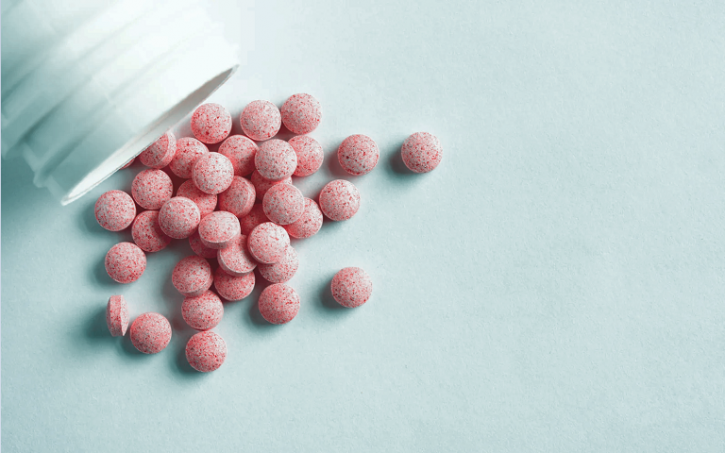Vitafoods Asia 2023
Going beyond looks: Science-backed ingredients, formulations, formats most crucial for supplements success – TSI CEO

Taking China as an example, the market is hungry for novelty, but often, the innovations seen in the nutraceutical space are very much “only at the surface level”, says Joe Zhou, chairman of the board and CEO, TSI Group.
He was speaking with NutraIngredients-Asia at Vitafoods Asia held in Bangkok in September, where his company showcased one of its latest innovations – the FZZR technology.
The technology could develop supplements into formats such as granules, melts, and mints that fizzle in the mouth, providing a new sensory experience.
The technology also allows a higher loading of actives as compared to formats such as gummies and tablets.
Launched this year, the technology is already used in a brand partner’s healthy ageing product containing probiotics and hydroxy-methyl-butyrate (HMB) as the actives. The product is now available in the China market.
Another product for immunity, mobility, and stress support was also launched in Sweden using this technology.
Dosage format is a key area of competition in the health supplement space, and this is very much the case in China as well, with probiotics brand WonderLab snapping up market share rapidly partly due to its novel appearance.
“China have grown and changed very fast in the last 40 years. People like to see something new all the time.
“But most of the changes are only at the surface level and are not really substantial.
“Chinese packaging could be fantastic, it could be very good, but if you really look at it deeper, it’s still a little bit too superficial,” Zhou said.
A good nutrition supplement, he said, would be dependent on three criteria, namely 1) the use of scientifically backed and clinically proven ingredients, 2) the formulation, and 3) the delivery format.
“A lot of people don’t really put efforts in the product formulation. Because sometimes, using good ingredients alone, may not be as good as using a combination of actives together. The formulation is very important.”
As for the delivery formats, it will need to be effective and something that consumers would want to take.
Based on these three key criteria, the company spent the past two to three years developing the FZZR technology.
“This is why we have developed FZZR, not because it looks good, it’s much more than that, but obviously the product formats developed using FZZR are very unique in their appearance as well,” he said.
In APAC, new products made using the technology are also expected to be launched in Malaysia in Q1 to Q2 next year. The products would be catered to healthy ageing and active nutrition.
Areas of application
Some of the areas in which the FZZR technology could be applied to include 1) sports nutrition 2) hydration 3) energy and 4) kids nutrition.
“The key value propositions of FZZR are that it has high active loading and could provide multiple health function, and so, sports nutrition, hydration, and energy are some of the areas of interest.
“This is because they are in the high active loading range and are traditionally served in powder of liquids,” said Patrick Antolak, director of global business development, FZZR Technology.
In the case of sports nutrition and hydration, some of the formulations that could be made using the technology include creatine, collagen, and the combination of potassium and sodium as electrolytes.
The company is also looking at kids’ formulation as well as kids could relate to these dosage formats.
“The gummy format is quite popular in the kid’s nutrition space. But the question is: ‘why?’ This is because kids are able to relate to gummies and don’t even think of it as medicines.
“By adding the fizz element to our melts or granules, it provides a fizzy sensation that they are able to relate to. For example, in Australia, we have people who can relate it to Life Saver's fruit tingles.
“In Vitafoods Europe, we gave these out as samples and people were relating it to Pop Rocks,” he said.
Advantages
The FZZR technology allows higher active loading that is difficult to achieve in the case of gummies and pills, as well as accommodating different raw materials that hinder stability to come together.
By allowing higher active loading, the technology allows a product to provide more health functions to the consumers.
“Because of this high active loading, we're able to provide multiple health function loading as well.
“Imagine having different supplements for immunity, calcium, joints, beauty, hair, skin, and nails. We could make a product that combines all these benefits, instead of having the consumers take five different tablets for achieve these benefits,” he said.
On the other hand, while the powder format is superior in terms of its active loading capability, it is unable to accommodate incompatible ingredients together.
However, the FZZR technology is able to overcome this by separating and accommodating different raw materials that hinder stability.
“This is key when you look at raw materials that can hinder each other's stability, such as iron and vitamin C. Generally, they are delivered in the form of a bilayered tablet or bilayered melt, which is quite costly as well.
“We are able to separate these raw materials into two separate mini tablets and have that ready to consume in a sachet,” he said.





